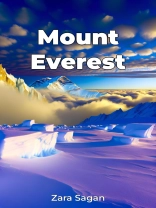‘Mount Everest’ presents a comprehensive exploration of Earth’s highest peak, masterfully weaving together the mountain’s geological origins, cultural significance, and its profound impact on human ambition. The book opens with a sobering statistic—one death for every ten successful summits—setting the stage for a multifaceted examination of this iconic landmark from its first measurement in 1856 to present-day challenges.
Through meticulous research drawn from expedition documents, scientific studies, and firsthand accounts, the narrative traces three interconnected themes: Everest’s geological formation and environmental challenges, the evolution of mountaineering attempts, and the modern commercialization of climbing expeditions. The book pays particular attention to pivotal moments like the historic 1953 Hillary-Norgay summit while incorporating insights into Sherpa culture, climbing technology advancements, and the mounting concerns about overcrowding and environmental degradation.
What sets this work apart is its balanced approach to combining technical accuracy with accessible storytelling, making complex geological and climatological concepts understandable for general readers while maintaining depth for enthusiasts. The chronological progression from Everest’s formation during the Indian-Eurasian plate collision to contemporary issues like climate change impact on glaciers offers readers a complete picture of how this majestic peak continues to shape human experience and environmental awareness.
Special emphasis is placed on practical aspects of climbing preparation, conservation strategies, and responsible tourism, making it valuable for both armchair adventurers and serious mountaineers.












